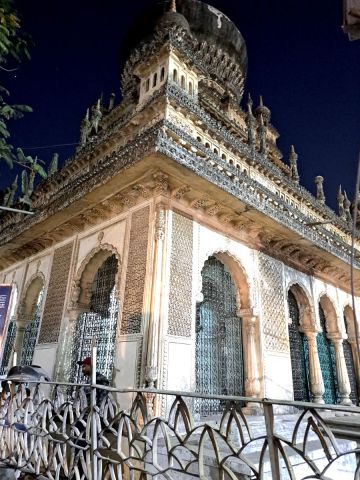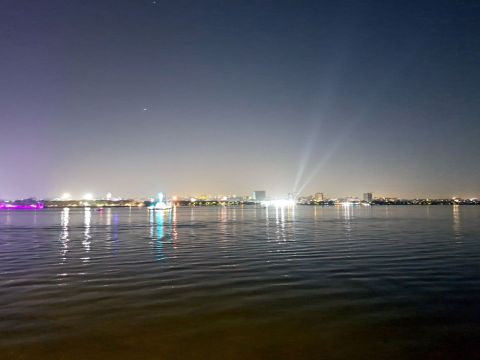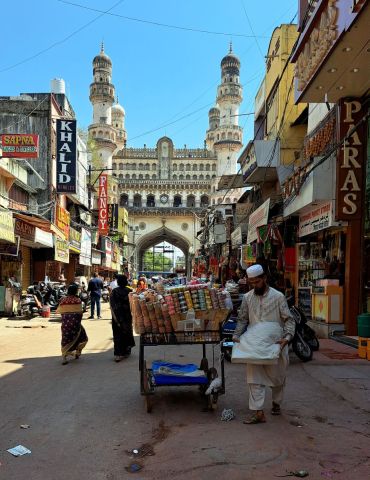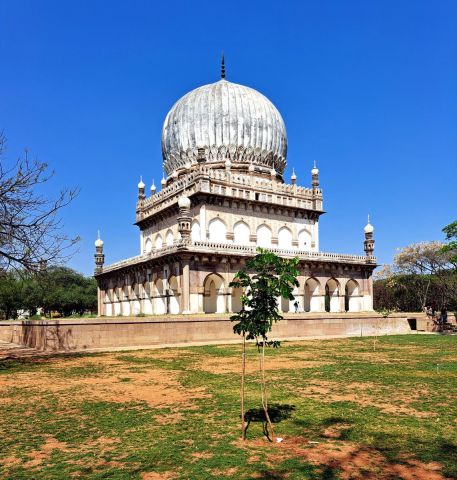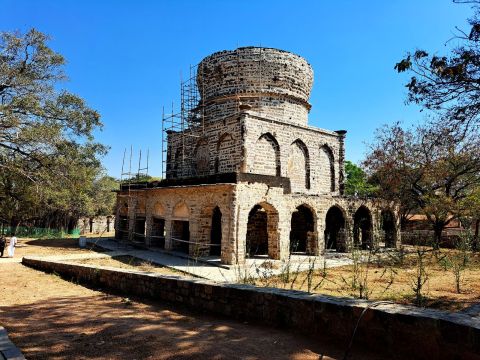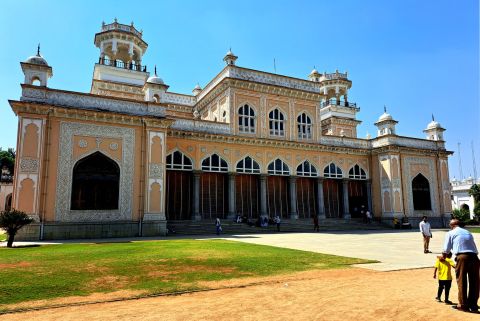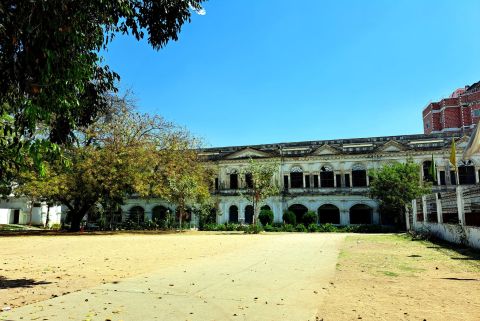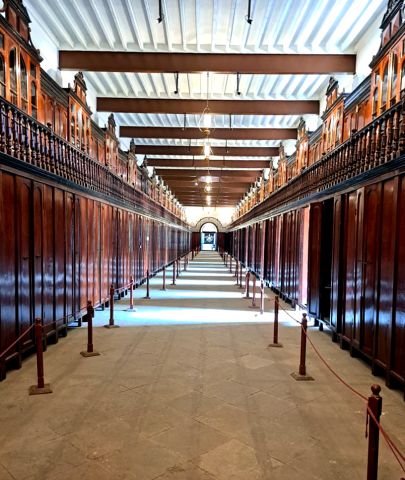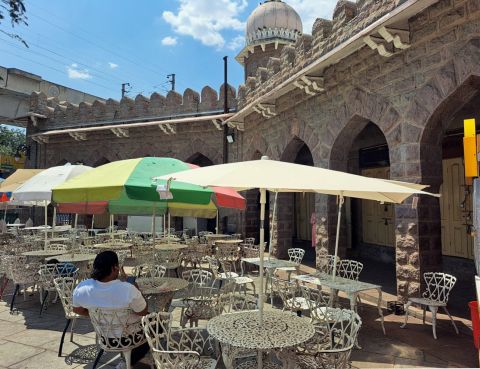City of Sultans
Journey to the history offered me a chance to explore the society and economy, culture and food, beliefs and faiths of different dynasties ruled in Hyderabad.
While selecting the place for 3 days 2 nights trip with my parents and 4yrs old son, I didn't even know we have to be on our toes all the time to explore the history, culture and food of the city having royal past. HYDERABAD, a city enwrapped with magnificent fort, splendid monuments and mosques, glorious palaces, enchanting lakes and mouthwatering foods with historical roots.
After arriving at the Hyderabad airport, I told my son 'This is Hyderabad, city of Nizams.' During departure from the Hyderabad airport, I told myself 'This is the city of Qutb Shah, who are remembered as a founder of the city and patronage of literature of Persian, Urdu and Telegu and also city of Nizam, being a faithful friend of British, bestowed the city with both economic and cultural growth.
We reached Hotel in the afternoon. After taking tea and snacks we hired an auto and went to see Saidani Maa tomb which is located at the north end of Hussain Sagar. Saidani Maa Saheba was a saint during Nizams’ rule. As we came from the south end of Hussain Sagar, we had to go around the Hussain Sagar from South end to North end. It is around 10mins drive through the bank of Hussain Sagar Lake. We returned through the same road and stopped near Hussain Sagar View Point. Hussain Sagar was built by Ibrahim Qutb Shah, but named after the master of Architecture of the Qutb Shahi Kingdom, Hussain Shah Wali. It was the main source of water supply to the city till first quarter of 20th century.
We enjoyed the night view of the lake, Buddha Statue and the activity of people on the bank of the lake. Most of them were doing their regular evening walk and some came with friends and/or family to enjoy the soothing breeze along with ice cream or chana masala at the bank of the lake.
We came back to hotel and hired a car for the next day. I wanted to go with the historical timeline. So, the 1st and 2nd day were reserved for Qutb Shahi dynasty.
We had our branch (breakfast cum lunch) at hotel in the following morning and started the 2nd day city tour with Charminar. In the early morning, what irritated me most is the insistence of the driver of our car to change our 2nd day tour plan and spend the day at Ramoji Film City. I don't know the reason behind such insistence. My reply was when we, non hyderabadi, hear the name Hyderabad, the picture of Charminar automatically gets created in our mind. 'Being a hyderabadi, citizen of a princely state till 1948, please do not divert from your root'.
The car dropped us at the junction of a small lane. We started walking through the lane. The lane is in the market of saree and bangles, called Laad Bazaar. Charminar is around 3-5mins walking distance from the junction. We booked tickets (Rs. 20/- per person) and entered into the Charminar 'Four Pillar', mosque and among top ten monuments of the country. According to Archaeological Survey of India, Muhammad Quli Qutb Shah built this monument 'to commemorate the eradication of plague'.
We went to the 1st floor of the monument with my son and enjoyed the view of Mecca Masjid, Laad Bazaar and Char Kaman. We took some photograph inside the historic monument and came down soon as it was Friday namaz time.
Timing of Charminar: 9am-5:30pm except Friday when it is closed for one and half hours from 12:30pm for Jum'ah.
We then walked towards Mecca Masjid, one of the largest mosques in India, and had a glance from outside as we could not go inside due to Jum'ah. Please do not miss the chance of tasting Irani chai, taste of Persia brought to Hyderabad by Persian immigrant, with Osmania biscuit, first baked on demand of seventh Nizam of Hyderabad Mir Osman Ali khan, from Nimrah Cafe and Bakery just next to Mecca Masjid.
We then headed towards Qutb Shahi tombs and Golconda fort. Qutb Shahi tombs are located 1km north of the Banzara Darwaza of Golconda fort. Six rulers of Qutb Shahi dynasty and their families, daughter of Muhammad Quli Qutb Shah, Hayat Bakshi Begum are buried in the same compound.
These tombs have a unique Qutb Shahi architectural style which is a combination of Persian, Pathan and Indian architecture. As per the custom of Qutb Shahi dynasty, these tombs were built during the lifetime of the rulers. A mosque is there in the compound which was built in one day as per our tourist guide.
Once I entered in the compound, I saw a tomb where there was no dome on the top. I thought the tomb was not properly maintained or it was demolished and now repairing work is going on. I didn't know the history. The last ruler of Qutb Shahi dynasty, Abul Hasan Qutb Shah, was building the tomb for himself as was their custom. At the end of his reign before completion of the tomb, Aurangzeb arrested him and imprisoned at Daulatabad where he died in prison. So, the tomb remained incomplete and the desire of resting together with his family remained unfulfilled.
Timings and entry ticket price of Qutb Shahi tombs: 9:30am-6:30pm and Rs. 10/- per adult and Rs. 5/- per children respectively.
We entered Golconda fort at around 2PM to explore its glorious history. Though Golconda was built by Kakatiya and it saw the rule of Bahamani, it still sings the sonnet of the glorious past of Qutb Shahi dynasty. The beautiful fragrance of the fort's gardens, the burst of activity and liveliness of the market city of diamond, gems and cloths might have been lost in time, but the euphony of the poem and ghazal full of love and zest composed inside Golconda can still be felt in the ruined fort.
Golconda was the early capital of Qutb Shahi dynasty. Muhammad Quli Qutb Shah, scholar of Persian, Arabic and Telegu language built the city of Hyderabad in the honour of his beloved wife Bhagmati and named the city Bhagyanagar. And later the name changed to Hyderabad once he conferred on her the title 'Hyder Mahal' after his marriage. He was also passionate in dancing and painting. Kuchipudi dance was named by grand nephew of Muhammad Quli Qutb Shah, Abul Hassan Qutb Shah, the last monarch of Qutb Shahi dynasty.
You can see Bala Hissar gate at the main entrance, the royal apartments and kitchen, halls, mosque, temple, stables and an engineering marvel 'acoustic system' of the ruined fort. A hand clap under the dome of Fateh Darwaza can be heard a kilometre away at the highest point.
The entry ticket price Rs. 15/- per person and timing from 9am-5:30pm.
You can also enjoy the Sound & Light Show of the fort in the voice of Amitabh Bachchan. It mainly reveals the tales of the legendary past of the Qutb Shahi dynasty.
Show timing: 1st Show English (All Days) 2nd Show in Telugu on Monday, Wednesday & Friday, and Hindi on Tuesday, Thursday, Saturday & Sunday. Show Timings: (Nov to Feb) 1st Show 6:30pm 2nd Show 7.45pm (Mar to Oct) 1st Show 7:00pm 2nd Show 8.15pm. The ticket fee in executive class Rs. 140/- per adult and 110/- per child and in normal class Rs. 80/- per adult and 60/- per child.
We returned to the hotel acquiring lot of treasures from the history of Golconda.
The itinerary of day 3 was all about Nizams, Chowmahalla Palace, Nizam Museum and Hyderabadi Biriyani. You can also plan to visit the 3rd largest museum of India, Salar Jung Museum. It is a private collection of paintings, manuscripts, sculptures, textiles, furniture etc. of the noble family, Salar Jung, under Nizams.
After finishing breakfast, we hired an auto for 3-4hrs and went to the first destination of the day, Chowmahalla Palace. It was the royal seat and residence of Nizams, Asaf Jahi dynasty. They were patrons of Persian language and culture. The grand ornamented ceilings, pillars and walls in the Khilwat Mubarak, chandeliers made of Belgian crystal, marble platform on which the royal seat is placed, photographs, textiles, furniture, collection of various Nizams' vintage cars give the impression of lavish lifestyle of the royal Asaf Jhahi family.
The heart of the palace is the Khilwat Mubarak where the durbar hall and council hall are located. Durbar hall is the place where Nizams held their durbar and other ceremonies and Nizams used to meet important officials and dignitaries in Council hall. The Council hall is converted into museum with a rare collection of books and manuscripts. The name 'Chowmahalla' signifies 'Four Palaces', Aftab Mahal, Afzal Mahal, Tahniyat Mahal and Mahtab Mahal, built around a central fountain.
The entry fee of the place is Rs. 80/- per adult and 10/- per child. Timing: 10am-5pm except Friday and Public holiday.
I believe the establishments of Osmania University, State Bank of Hyderabad, Osmania General Hospital, Osmania Medical College, Begumpet Airport, Osman Sagar and Himayat Sagar were the major contributions to the princely state by Nizams. These were done by the truly secular Nizam of Asaf Jhahi dynasty, Mir Osman Ali Khan. He has considerable contribution in the reformation of education, agricultural and other developments. He was titled "Faithful Ally of the British Crown".
Mir Osman Ali Khan was born in the Purani Haveli, official residence of the Nizams. It houses Nizam's museum which is dedicated to Mir Osman Ali Khan. The main attraction of this museum is the longest wardrobe in the world. Father of Mir Osman Ali Khan, Mehboob Ali Khan (Asaf Jhah VI), was narcissistic. He was the first Nizam who started wearing western dresses and he did not wear same dress twice.
The entry fee Rs. 100/- per adult and 15/- per child and timing 10am-5pm except Friday and Public holiday.
It is unfair 'Hyderabad gaye aur hyderabadi biriyani nahi khaye'. Hyderabadi biriyani, originated in the kitchen of the first Nizam, Nizam-ul-Mulk, is a combination of Hyderabadi and Mughlai cuisines. Hotel Shadab is a highly rated restaurant that serves mouthwatering authentic hyderabadi biriyani. You can have lunch at Shadab as it is also located at the old city. I would also recommend to try ice cream from historic Moazzam Jahi market, named after the prince Moazzam Jah, and desserts khubani ka meetha, shahi tukda (dessert from Mughal era), shahi sheer khurma and ariselu, a traditional sweet from Andhra Pradesh and Telangana.
The journey to the past of Hyderabad city offered a mesmerizing panoramic view of different ages having different beliefs and faiths, different society and economy, different food and culture. When our plane started rolling from the Hyderabad airport, I had a profound feeling that the best way to enjoy history is to look at things and events with exclusively individualistic thoughts and feelings.




